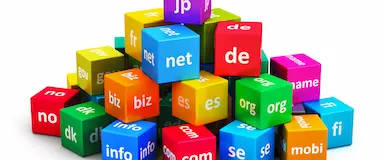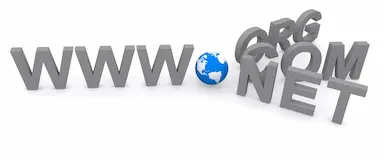With generic TLDs being oversaturated and marketed globally, country domains can help you reach a local audience and boost SEO.
Guide to Buy Your Own Personalized Top-Level Domain
Written by Steven White ·

Introduction
In today's digital age, establishing a unique and memorable online presence is more crucial than ever. One way to achieve this is by owning a personalized top-level domain (TLD). Imagine having a web address that ends in .yourname or .brand, setting you apart from the competition and enhancing your brand's identity. This article provides a comprehensive guide on how to buy your own personalized TLD, from understanding the basics to navigating the acquisition process.
Understanding Top-Level Domains (TLDs)
Definition of TLDs
A Top-Level Domain (TLD) is the last segment of a domain name, coming after the final dot. Common examples include .com, .org, and .net. TLDs are categorized into two main types: generic TLDs (gTLDs), like .com and .org, and country code TLDs (ccTLDs), such as .uk for the United Kingdom or .jp for Japan.
The Concept of Personalized TLDs
Personalized TLDs take the concept of domain naming to the next level. Instead of using standard options like .com, personalized TLDs allow you to create a unique domain ending that represents your brand or identity, such as .yourname or .company. Examples of companies using personalized TLDs include .google by Google and .apple by Apple.
Why Buy a Personalized TLD?
Branding and Marketing
Owning a personalized TLD can significantly boost your brand's identity and marketing efforts. It creates a unique and memorable web address that stands out, making it easier for customers to remember and find your website. This unique branding opportunity can differentiate your business in a crowded market, enhancing brand recall and loyalty.
Control and Flexibility
A personalized TLD gives you complete control over your namespace. This means you can create and manage subdomains as needed, such as blog.yourname or shop.yourname, offering flexibility in organizing your online presence. This control can streamline your digital strategy and ensure a consistent brand experience across all your subdomains.
SEO and Credibility
While SEO benefits are still debated, a personalized TLD can potentially improve your search engine rankings by enhancing your brand's authority and relevance. Moreover, having a unique TLD can increase trust and credibility among users, as it signifies a serious and established online presence, often associated with larger, reputable organizations.
Steps to Buy Your Own Personalized TLD
1. Research and Feasibility
Check ICANN Requirements
Before diving into the process of acquiring a personalized TLD, it’s essential to understand the requirements set by the Internet Corporation for Assigned Names and Numbers (ICANN). ICANN oversees the global domain name system and sets specific criteria for TLD applications. These requirements include technical, operational, and financial capabilities to manage a TLD.
Evaluate Costs
Acquiring a personalized TLD is a significant financial commitment. The initial application fee is approximately $185,000, and there’s an annual maintenance fee of around $25,000. Additionally, you may incur costs related to technical infrastructure, legal fees, and marketing. It’s crucial to conduct a thorough cost-benefit analysis to determine if the investment aligns with your business goals and budget.
2. Preparing Your Application
Assemble a Team
A successful TLD application requires a multidisciplinary team, including technical experts, legal advisors, and marketing professionals. This team will help you navigate the complexities of the application process and ensure that you meet all ICANN requirements.
Develop a Strong Proposal
Your application must include a comprehensive business case and a clear purpose for your TLD. Outline the benefits it will bring to your brand or community. Additionally, you’ll need detailed financial and technical plans demonstrating your capability to operate a TLD sustainably and securely.
Compliance and Documentation
Ensure your application complies with ICANN’s technical, operational, and financial criteria. You’ll need to provide extensive documentation, including proof of your technical infrastructure, financial stability, and operational plans. This step is crucial to demonstrate your ability to manage a TLD effectively.
3. Application Submission
Submitting to ICANN
Once your application is complete, you can submit it to ICANN during an open application window. Be mindful of the deadlines and timelines associated with the application process. ICANN typically opens application windows periodically, so it’s essential to stay informed about upcoming opportunities.
Evaluation Process
After submission, your application will undergo ICANN’s evaluation process, which includes Initial Evaluation and Extended Evaluation if necessary. During the Initial Evaluation, ICANN assesses your technical, operational, and financial capabilities. If your application passes the Initial Evaluation, it moves forward. If there are any issues, it may enter Extended Evaluation, where further scrutiny and additional information may be required. Possible outcomes of this process include approval, rejection, or the need to address objections raised by third parties.
4. Delegation and Activation
Technical Setup
Once your TLD is approved, the next step is to set up the technical infrastructure required to support it. This includes configuring DNS servers, ensuring robust security measures, and establishing a reliable system for managing domain registrations. Partnering with a backend registry service provider can help streamline this process.
Launching Your TLD
With the technical setup in place, you can proceed to launch your TLD. Develop a marketing strategy to promote your new TLD and attract registrants. Consider creating special offers or partnerships to boost initial registrations. Additionally, establish clear policies and guidelines for managing your TLD to ensure a smooth and compliant operation.
Challenges and Considerations
High Costs
One of the most significant challenges of acquiring a personalized TLD is the high cost involved. The initial application fee alone can be prohibitive for many businesses, and ongoing maintenance and operational costs add to the financial burden. It’s important to weigh the potential return on investment carefully. Businesses must ensure that the benefits of owning a personalized TLD justify these expenses and fit within their budget.
Technical Complexity
Operating a TLD requires specialized technical knowledge and infrastructure. This includes managing DNS servers, ensuring high availability and security, and complying with technical standards. For many businesses, partnering with experienced backend registry service providers can help mitigate these challenges. These providers offer the technical expertise and infrastructure needed to run a TLD effectively.
Regulatory Compliance
Adhering to ICANN policies and other regulatory requirements is crucial. This includes maintaining accurate records, ensuring data privacy, and complying with international laws. Failure to comply with these regulations can result in penalties or the loss of your TLD. It’s essential to stay informed about regulatory changes and implement robust compliance practices.
Alternatives to Personalized TLDs
Branded Subdomains
For businesses that find the costs and complexities of a personalized TLD daunting, branded subdomains offer an alternative. Using an existing TLD, you can create custom subdomains that align with your brand (e.g., blog.yourname.com or shop.yourname.com). This approach provides some of the branding benefits of a personalized TLD without the high costs and regulatory challenges.
New gTLDs
Exploring new generic TLDs (gTLDs) that are already available can also be a viable option. TLDs like .app, .tech, .store, and others offer unique branding opportunities and are less expensive to register and maintain than personalized TLDs. These gTLDs can help differentiate your brand while avoiding the complexities of owning a personalized TLD.
Conclusion
Owning a personalized top-level domain (TLD) presents a unique opportunity for businesses and individuals to enhance their digital presence. By following the steps outlined in this article—from researching and preparing your application to the final delegation and activation—you can navigate the process of acquiring your own TLD. Despite the high costs and technical complexities, the potential branding, control, and credibility benefits make personalized TLDs an attractive option for those looking to establish a distinctive online identity.



